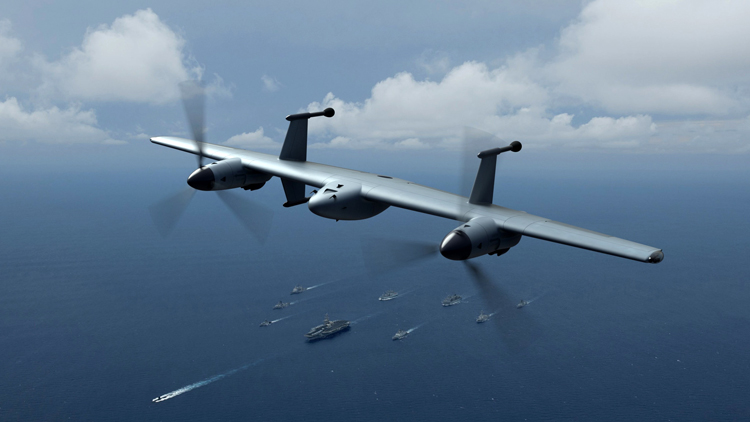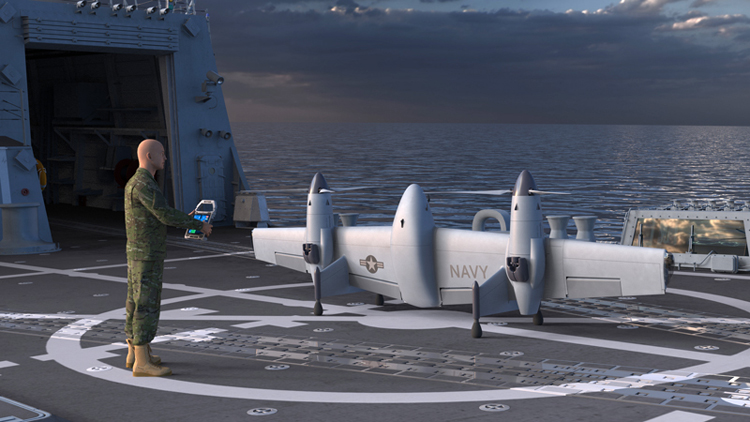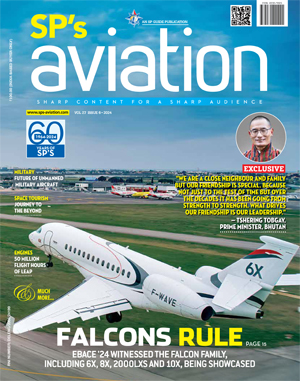INDIAN ARMED FORCES CHIEFS ON
OUR RELENTLESS AND FOCUSED PUBLISHING EFFORTS

SP Guide Publications puts forth a well compiled articulation of issues, pursuits and accomplishments of the Indian Army, over the years

I am confident that SP Guide Publications would continue to inform, inspire and influence.

My compliments to SP Guide Publications for informative and credible reportage on contemporary aerospace issues over the past six decades.
- Rajnath Singh assumes charge as Defence Minister for the second consecutive term
- Interim Defence Budget 2024-25 — An Analysis
- Union Defence budget 2024
- Prime Minister Modi Flies in the LCA Tejas
- New Chapter in India-Italy Defence Ties
- Airpower beyond Boundaries
- Full address by Air Chief Marshal V.R. Chaudhari, Chief of the Air Staff
Sikorsky Flight-Tests Scalable 'Rotor Blown Wing' UAS for DARPA Project
The VTOL tail sitter features proprotors for flight efficiency

Sikorsky, a Lockheed Martin company, is conducting flight tests to mature the control laws and aerodynamics of a novel vertical takeoff and landing uncrewed aerial system (VTOL / UAS). The flight tests are intended to prove the efficiency and scalability of a twin proprotor 'rotor blown wing' configuration that sits on its tail to take-off and land like a helicopter, and transitions easily to horizontal forward flight for long-endurance missions, such as intelligence, surveillance, reconnaissance and targeting.
The ongoing flight tests support the Ancillary initiative by the Defense Advanced Research Projects Agency (DARPA), which seeks to develop a Class 3 UAS VTOL X-Plane that can operate in most weather conditions from ship decks and unprepared surfaces without infrastructure. Sikorsky is one of several competitors down-selected to advance their UAS conceptual designs into the next development phase.
The term 'rotor blown wing' refers to the constant airflow from the proprotor wash across the wing. Sikorsky chose the design to reduce drag on the wing in hover mode and when transitioning to forward flight, and to increase cruise efficiencies and endurance.
The design is just one of the many ways Sikorsky is advancing 21st Century Security® technologies and innovations, said Igor Cherepinsky, director of rapid prototyping group Sikorsky Innovations.

"Flight tests are underway to verify our tail-sitting rotor blown wing UAS can launch and land vertically with high stability, and cruise efficiently on wing," said Cherepinsky. "Key enablers to flight maneuverability, and future vehicle scalability, are our MATRIX autonomy flight control system, and an articulated rotor system similar to those in traditional helicopters."
For the flight tests now underway, Sikorsky is flying a proof-of-concept vehicle powered by a battery. If selected to produce an air vehicle for a future ANCILLARY phase, Sikorsky plans to build a 300-pound hybrid-electric version to include a 60-pound ISR payload.
Sikorsky Innovations was formed in 2010 to overcome technological challenges to rotary wing speed, autonomy, and intelligence. Learn more about the engineering team's achievements in speed and intelligence, and its current focus on electrification and VTOL UAS to support 21st Century Security® missions.





